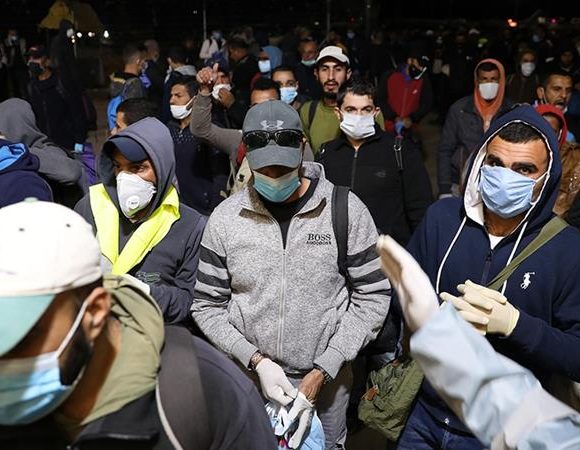

One year past an astounding victory in 2014, the Modi government has been successful in rolling many accomplishments up its sleeves. From the grandeur of Make in India to the magnificence of Digital India, government swayed masses with its vision and political correctness. The induction of the Ebiz portal to create a single window clearance for businesses, to the Swachh Bharat Mission, every initiative of the government enthused people. For those who see Modi as the savior of the country battling political paralysis and lethargy, to those who envisage India to be a developed country, these endeavors struck a chord with many. After all, action was finally hitting the ground.
Of the many schemes, the Smart City Mission is currently making headway into mainstream as Prime Minister unveiled the official guidelines for smart cities last week. A total of Rs 48,000 crore has been allocated to transform a select 100 cities across the country into smart cities. These cities are expected to augment the quality of life of its citizens and employ smart solutions with integrated ICT. Now with guidance primed, many cities that have successfully lured investment such as Ajmer and Jaipur will be able to seamlessly march ahead. At the launch event on 21st June, the Prime Minister particularly remarked “We cannot leave poor to their fate. It is our responsibility. But the underlying question remains, what does the inclusion of the underprivileged in the mainstream entails.
It will not be an enigma if a smart city does not feature in the list of priority of the 30 crore Indians living under stark poverty. For a country that is home to one of the largest number of malnourished and stunted children under the age of five and features at 55th place in the Global Hunger Index, in the list of 76, needs to draw mechanism to make food and drinking water available at the earnest. A UNICEF report mentions the national average of sanitation, hygiene and water safety stands at mere 34 per cent and over 626 million people defecate in open. As of December 2011, over 300 million Indian citizens had no access to frequent electricity. The country is in dire need to formulate and effectively implement policies to fulfill the fundamental needs of its citizens. To create jobs, feed the poor and provide access to clean drinking water, electricity, transportation and sanitation.
One cannot and should not rebuff the process of development; however smartness cannot be ensued while 29.5% citizens are below the poverty line. The disparity in India between the rich and poor is one of the highest in the world and constantly widening. The current government since its inception has been accused to have failed the poor, especially in the aftermath of brewing agrarian crisis. Farmers’ suicides aggravated by unseasonal rainfall have only brought upfront the deep crisis within the agricultural sector that employs nearly 50% of the workforce. The response mechanism has been dismal. Little has been done for the underprivileged and the opulence of grand schemes has overshadowed the need of the hour. As Nobel laureate Amarty Sen in his book the Argumentative Indian points out the need to distinguish between faring forward and faring well, while the government may surely have fared forward, it’s still incumbent to prove the latter!
I was besmirched and bashed for an article I wrote a few days back on ‘why 100 smart cities is not what India may really want at this point in time’. For the ease of those who haven’t read the part one, I had earlier written that smart city may not feature in the wish list of 30 crore poor people in India who struggle to survive and fend for basic living. A country which stands at 55th place, in the list of 76 countries, in the Global Hunger Index and where 300 million citizens have no access to frequent electricity, needs to draw mechanism to alleviate poverty prior to developing a select few cities. I further stressed on the need to formulate right policies to address these pertinent issues. While many misunderstood my stance as a support for the welfare state, some called it a rant, others dismissed it as a paid article (from congress), and some hate mongers chose to abuse me and my credentials. While the social media vitriol is not new to me, I specifically decided to address those who deeply care about the objective of an intellectual discourse and further clarify my stance.
To get a sense of what smart city is, the government instituted website says that “the key feature of a Smart city is in the intersect between competitiveness, Capital and Sustainability. The smart cities should be able to provide good infrastructure such as water, sanitation, reliable utility services, health care; attract investments; transparent processes that make it easy to run commercial activities.” Another important aspect of smart city is the use of ICT or smart solutions for services such as waste management, traffic control, Wi-Fi and more. Many companies including IBM, Oracle, CISCO and others are eyeing the opportunity to provide smart tech to these cities in collaboration with the local government. While all this sounds fancy to the English speaking-social media savvy-educated class of people, let’s get to the facts.
The total urban population of the country today stands at 31%, so while the denizens of these cities are likely to get access to smart solutions, waste management, traffic control and other ICT benefits, rest 69% is deprived of basic sanitation, transportation or drinking water. The depravity so entrenched that 56% of rural households are landless and derive income from manual labour, whereas the highest earning member in 74.5% of rural households earn below 5,000 rupees, as per the Provisional data of socio, economic and cast census released by the government last week. Clearly, a majority which lives in rural districts is left out of the grand scheme of things. On the contrary, much less is being done to contain rural household sustainability or immigration from rural dwellings to urban.
Many suggest that once the scheme kick starts, the economy will boom, which will result in job creation and wealth generation. Undoubtedly, even as the creation of 100 smart cities will provide employment for some, the number of unemployed people in India as of 2014 is 44.79 million, too large to be catered to, with secondary channels. The prospect of wealth generation on the other hand, is likely to follow the need for capital requirement first. The central government has currently pledged 48,000 crore for 100 smart cities for the next five years. However, the formula for generating the rest of the funds is yet to be worked out. In a conversation I had with Pratap Padode, Founder and Director of Smart City Council India, Padode said that a smart city will have to be self-sustainable and generate revenues in the long run, one way of doing this will is to charge citizens for the facilities offered. This is likely to push the poor out of the system, if the cost of living in a smart city is borne by citizens.
Some are quick to compare India with developed countries, lambasting that development process cannot be halted for a section of the population. What’s frequently missing is that the section here forms a significant population of India (India’s BPL population- 29.8%) whereas the number of the poor population is considerably lower in developed countries (US- 14.5%, UK-15%, Switzerland- 7.6%). Also the per capita incomes of these nations are much higher as compared to India and so is the actual employment ratio, according to Anup K Pujari, Secretary, Ministry of MSME. Comparing India therefore to those who do not face the same challenges as we do is futile.
The smart city project may form a part of the larger scheme on the development canvas; recovery is yet to pick on the ground. Even as the government is doing its bid in the form of Digital India, Swachh Bharat and many more, critics say it’s an urban utopia, far from the realms of reality of rural India. While we cannot dismiss the entirety of the efforts by the government, we need policies aimed at holistic development. A balanced approach to the Indian problem is what I ask, not welfare schemes at large, for there is nothing such as a free lunch.
Shweta Kothari



















